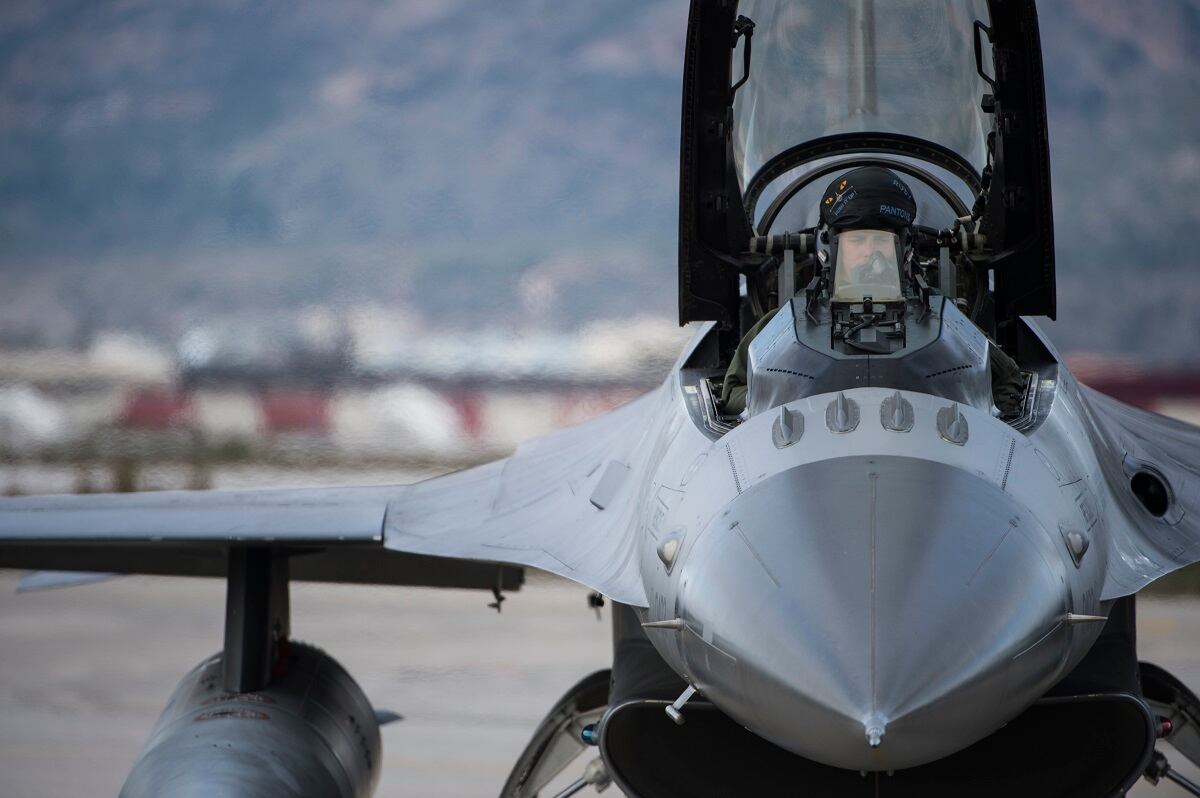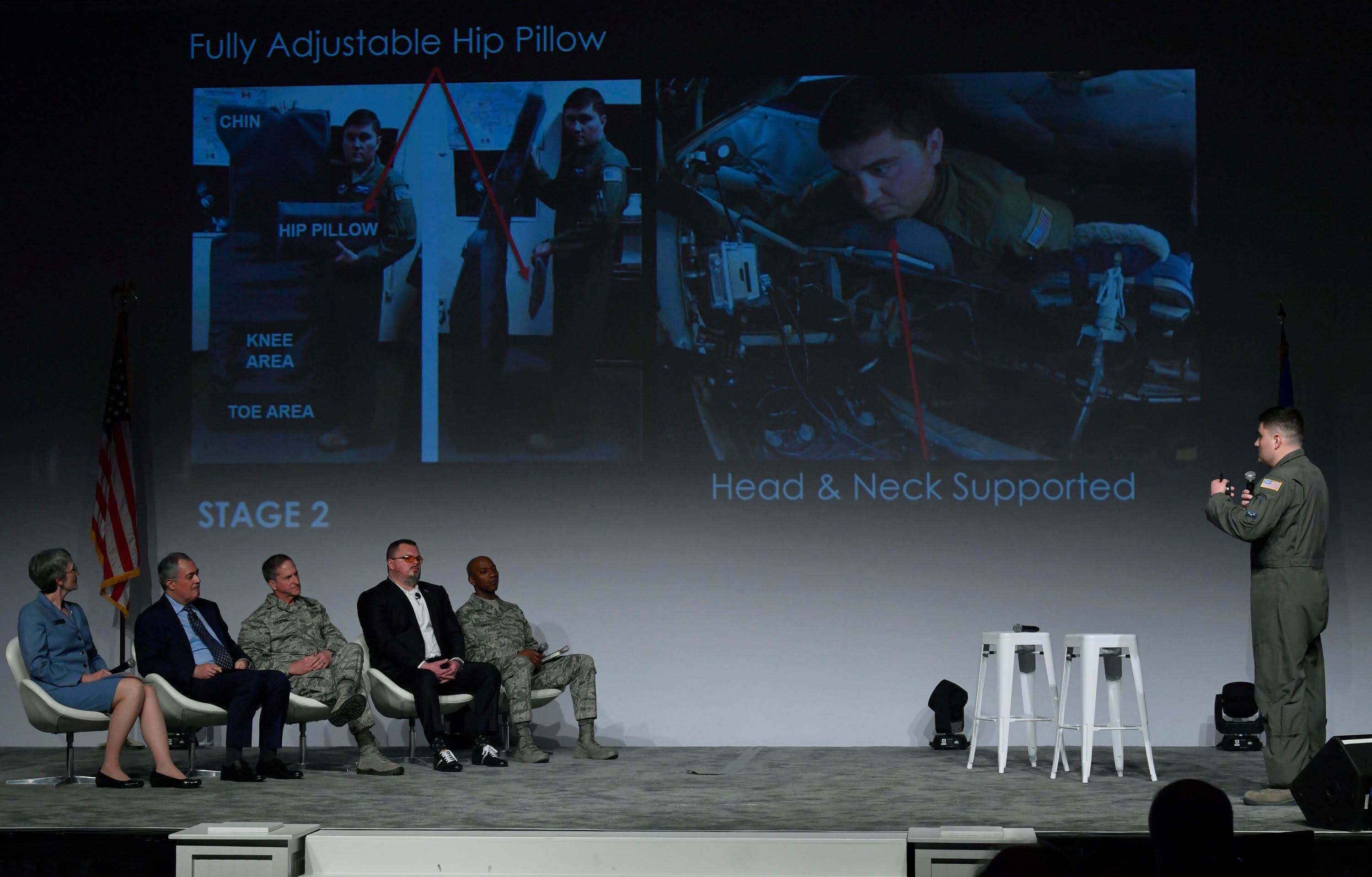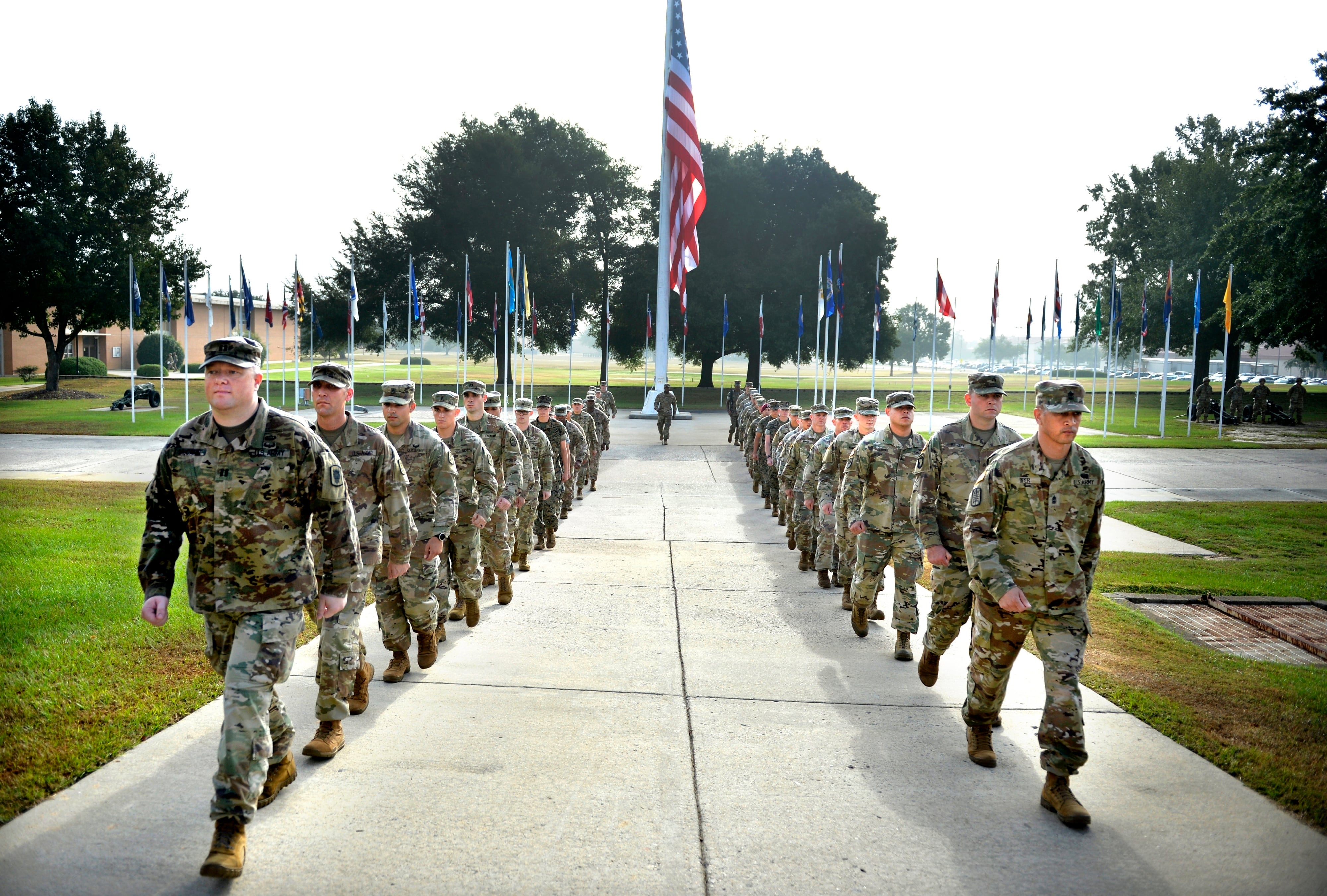As the U.S. military turns its attention to the threats posed by near-peer adversaries, Air Force leadership is shifting its focus to great power approaches to combat, like multi-domain operations and expeditionary warfare.
A culture of innovation among airmen will be pivotal in preparing for such a conflict, and the effort to foster that independence and creativity is already underway.
In the coming weeks, the Air Force will be rolling out a new initiative to crowdsource solutions from airmen around the service.
Across all specialty codes, the service is calling on airmen to design apps, develop algorithms and create new approaches to the problems that plague their career fields or help the Air Force carry out its missions.
The program — dubbed the Vice Chief’s Challenge — will be spearheaded by Air Force Vice Chief of Staff Gen. Stephen Wilson.
“We want to take the ideas our airmen have to see around corners, anticipate what’s next and solve these really complex national security challenges,” Wilson told Air Force Times.
Those challenges range from fusing open-source social media information into actionable intelligence with new software, to upgrading legacy aircraft with gadgets to help airmen stay in the fight longer.
“Navigation apps like Waze change the way we travel across town by giving us an intuitive display that integrates traffic, hazards, and route recommendations in real time. Companies like Uber and Amazon have transformed our view of logistics," according to a copy of the Vice Chief’s Challenge provided to Air Force Times. "They are not the only ones leaning forward. I am sure each of you have seen opportunities to enhance [multi-domain operations]. I want to hear your best ideas.”
RELATED

The initiative is designed to deliver capabilities to the Air Force in months, rather than the usual years, Wilson said. And it’s going to become routine, always running against the backdrop of the service’s other acquisition initiatives.
“It’s this cultural change and this shift that happens ... and today, I think it’s clear in this great power competition, we need this urgently," Wilson said. “I need to remove barriers to innovation."
The Vice Chief’s Challenge will consist of three phases. First, ideas will be solicited from across the service in a broad announcement. Then, workshops will be set up in which subject matter experts help refine the most promising proposals and draft development plans for the budding ideas. The final phase will involve developing and demonstrating prototypes for the chosen concepts.
“We’ll start small by gathering ideas from individual airmen, rapidly evolve concepts with national thought leaders, and scale fast by working with industry to build and demonstrate prototypes in the next year,” Wilson said.
Each phase will be led by a different organization, but the Air Force Research Lab and the Office of the Vice Chief of Staff will serve as executive agents to ensure smooth transition between phases.
The initiative is similar to last year’s first-ever Spark Tank innovation proposals.
“Each of the [major commands] went out to their different wings and solicited ideas, picked their best ones and came to us," Wilson said. "There were a dozen ideas, of which we picked six of them and presented them at the [Warfighter’s Edge] conference.”

The idea chosen for development ended up being that of a boom operator on the KC-135 Stratotanker. He proposed a plan to re-engineer the boom operator platform instructor position for the entire KC-135 fleet at a projected cost of $1.5 million. The proposed innovation aims to both reduce back and neck injuries and save the Air Force $132 million each year in this critical aircrew specialty, according to Air Mobility Command.
“It was across the fleet, easy to implement, and that’s what we’re using now,” Wilson said.
Other innovative ideas that Wilson has already seen, and clearly wants more of, involve software development that connects sensors, platforms and nodes to share information across the force.
“We had an airman and second lieutenant who briefed me on software development they had done that was unbelievable — the capability they were bringing me and the speed at which they were doing it,” Wilson said.
The duo took SIPRNet information and found a way to fuse it together using complex computer coding for targeting purposes. The result was a tool dreamed up in-house that directly solved a pressing issue.
Much of that is simply owed to the fact that those airmen knew what they needed to do, how to do it and already worked in a position to provide the service.
“The CEO of Pivotal [Software Inc.] pulled me aside and said ‘I work with all the Fortune 500 companies across the world, and I would put these two people against any company, anywhere,’” Wilson said.
That’s the sort of innovation the Vice Chief’s Challenge is looking to tap into.
Wilson doesn’t know yet how many ideas will be taken to completion, but by this time next year, he’s hoping that the Vice Chief’s Challenge will be handing out some awards.
“I can’t compensate them like industry can, but I can offer them purpose," he said.
Kyle Rempfer was an editor and reporter who has covered combat operations, criminal cases, foreign military assistance and training accidents. Before entering journalism, Kyle served in U.S. Air Force Special Tactics and deployed in 2014 to Paktika Province, Afghanistan, and Baghdad, Iraq.





